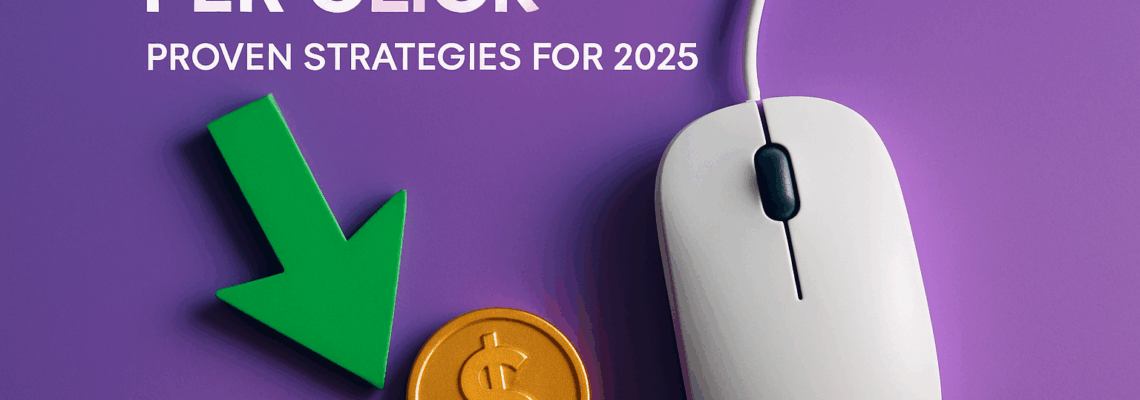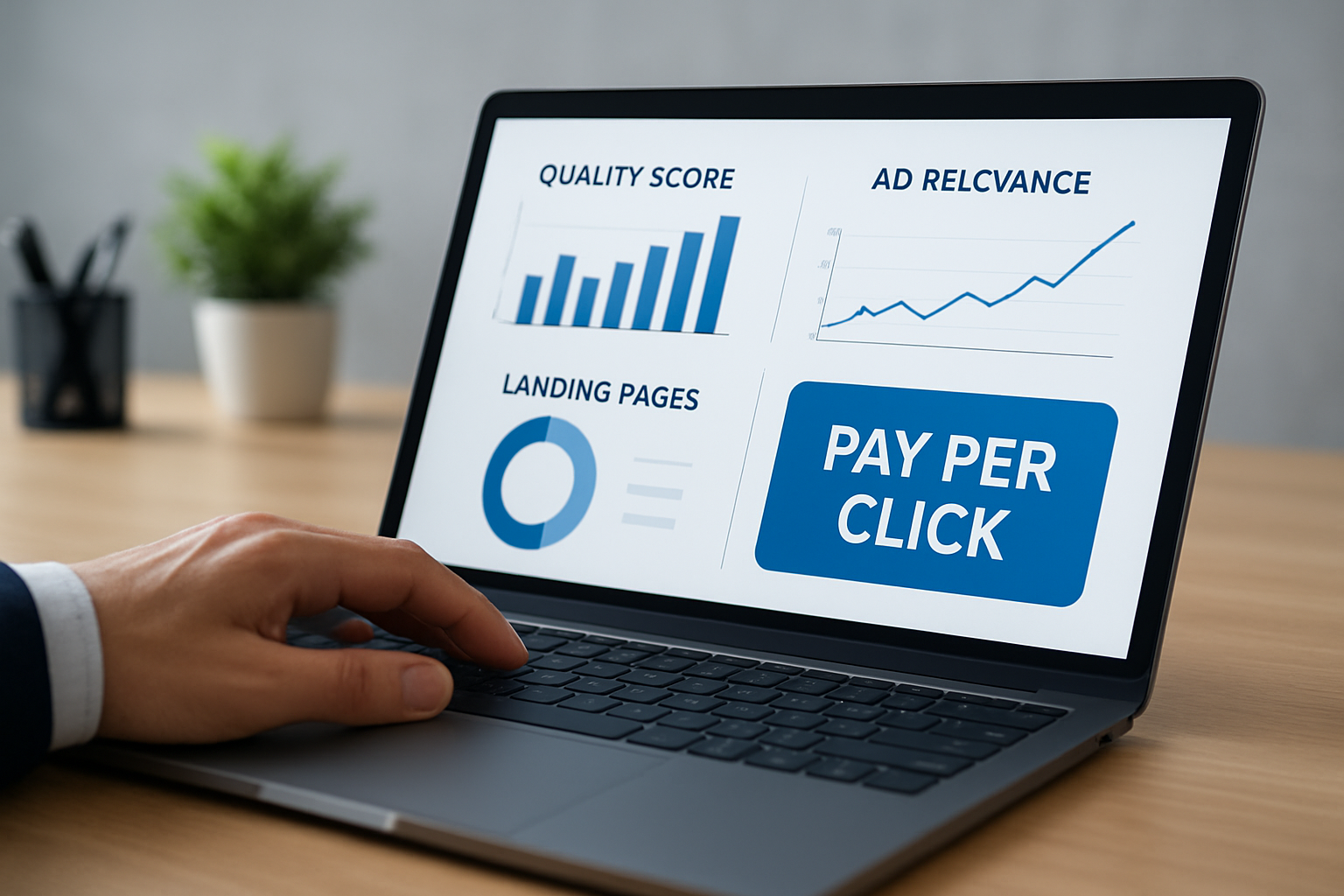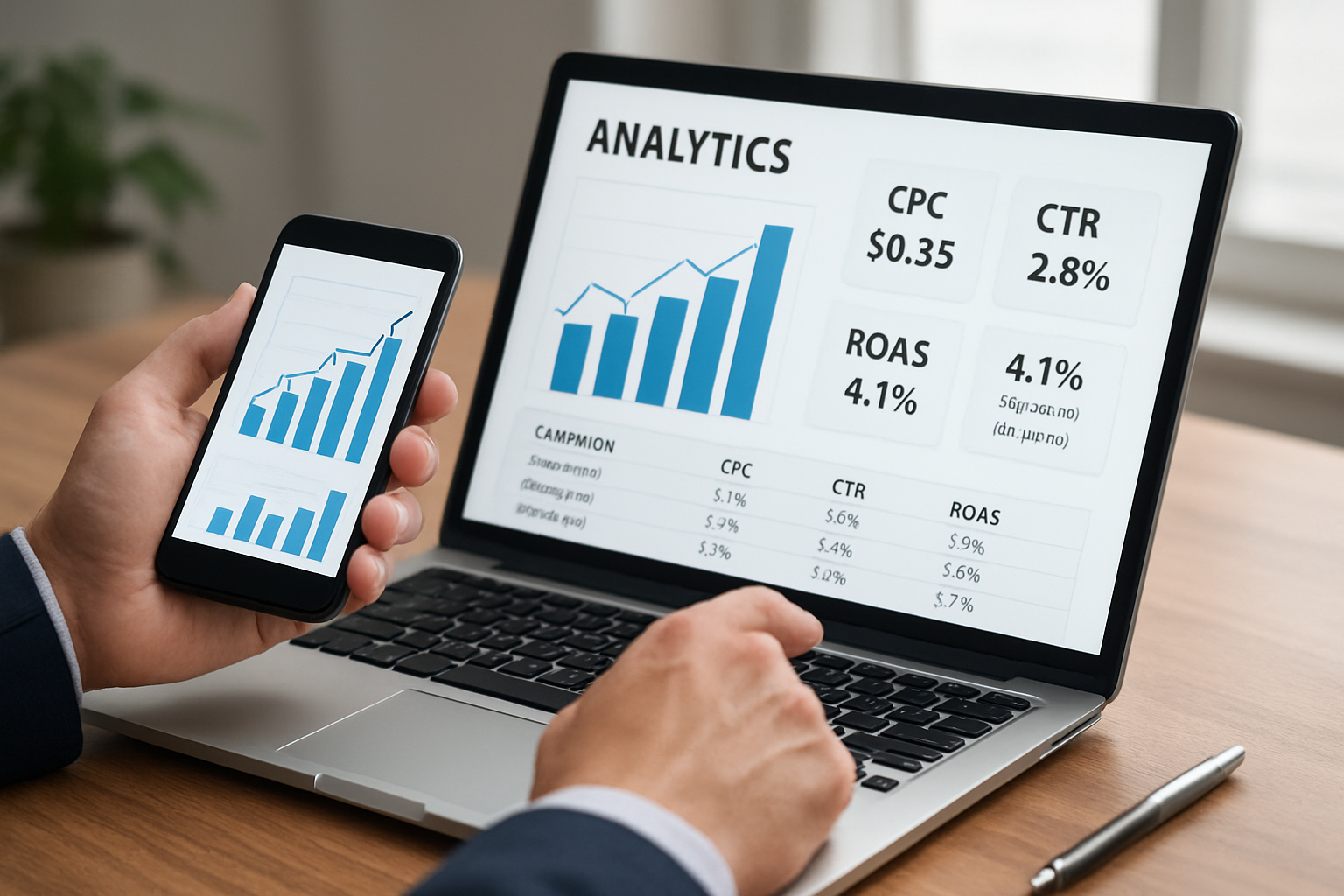If your cost per click has crept up lately, you are not imagining it. Competition is fierce, algorithms are smarter, and the ad auction rewards relevance more than ever. The good news is you can take back control without starving your pipeline. In this guide, I will walk you through practical moves that lower per click costs while protecting lead quality, using real-world examples from Internetzone I, Inc. Think of it like tuning up a high-mileage car: a few precise adjustments transform performance without replacing the engine.
Why Your Cost Per Click Rises—and How to Reverse It
Paid search is an auction, and price increases when more qualified bidders show up or when your relevance falls. Seasonal surges, new entrants, and broader match types can all push up cost per click. On the platform side, modern systems weigh ad relevance, landing page experience, and expected click-through rate (CTR [click-through rate]) heavily. If any of those slip, you are asked to “pay the difference.” The fix is not just to bid less. It is to become the ad the system prefers, so you win more impressions at a discount.
At Internetzone I, we see a typical pattern: accounts with scattered ad groups, generic copy, and slow-loading pages pay 15 to 40 percent more for the same traffic. When we tighten targeting, align ad-to-page messaging, and improve load speed, cost per click drops and conversions rise. Below is a quick cheat sheet to spot the culprits and the fastest remedies.
| Driver | How It Inflates Cost | Quick Fix | Expected Impact |
|---|---|---|---|
| Broad Targeting | Unqualified clicks increase costs | Add negatives, test phrase and exact matches | 5 to 20 percent lower cost per click |
| Low Relevance | Lower expected CTR (click-through rate) raises bids | Rewrite ads to mirror queries and intent | 10 to 25 percent lower cost per click |
| Slow Pages | Poor experience reduces Quality Score | Prioritize site performance and mobile-friendly design | 5 to 15 percent lower cost per click |
| No Dayparting | Waste during low-converting hours | Use time-of-day bid adjustments | 5 to 12 percent lower cost per click |
Audience, Keywords, and Match Types: Smarter Targeting, Lower CPC (cost per click)
Winning paid search is less about “more keywords” and more about “better queries.” Start by mapping your buyer journey from problem-aware to solution-aware. People who search “how to fix a leaking pipe” need education, while “emergency plumber near me” is buy-ready. Separate those intents into their own ad groups. Use exact and phrase match for your highest-intent terms, then layer in negatives to fence out bad traffic. A blended approach steadily lowers cost per click because the auction rewards precision.
Watch This Helpful Video
To help you better understand per click, we’ve included this informative video from HubSpot Marketing. It provides valuable insights and visual demonstrations that complement the written content.
Try this weekly routine that we implement at Internetzone I across industries:
- Mine the search terms report for irrelevant phrases and add negatives immediately.
- Promote proven queries into their own ad group with tailored ads and high-relevance pages.
- Test audience layers like in-market segments and remarketing lists to sharpen who sees your ads.
- Use location exclusions to remove regions that bring clicks but no conversions.
For quick orientation, here is how match types typically trade volume for efficiency.
| Match Type | Typical Volume | Typical Cost per Click | Best Use Case |
|---|---|---|---|
| Exact | Low to Medium | Lowest | High-intent, proven money terms |
| Phrase | Medium | Low to Medium | Close variants of winning queries |
| Broad with Negatives | High | Medium to High | Discovery and scale with close monitoring |
Quality Score, Ad Relevance, and Landing Pages: The Fastest Wins
Quality Score may feel opaque, but the inputs are practical: expected CTR (click-through rate), ad relevance, and landing page experience. You can influence all three, often within weeks. Write ads that echo the exact query and promise a clear next step. Use dynamic keyword insertion carefully to match phrasing without creating awkward grammar. On the page, keep the headline consistent with the ad, load in under two seconds, surface social proof, and remove friction from forms. That one-two punch raises engagement and lowers cost per click simultaneously.
This is where Internetzone I’s Web Design (mobile responsive, SEO-focused) and eCommerce Solutions shine. For a regional retailer, we rebuilt category templates with intent-driven copy and compressed media, then mapped ad groups to unique URLs. Result: Quality Score lifted from 5 to 8, cost per click dropped 28 percent, and conversions climbed 42 percent in 60 days. The principle holds whether you sell software trials or book local services. When the ad keeps a promise the page fulfills instantly, the auction discounts your click price because users reward the experience.
Bidding, Budgets, and Automation: Control Spend Without Losing Volume
Smart bidding can be a lever or a landmine. If your conversion tracking is messy, automated strategies will chase ghosts. First, verify conversion actions in Google Analytics 4 (GA4 [Google Analytics 4]) and ensure value is assigned where appropriate. With clean data, test target cost per acquisition (tCPA [target cost per acquisition]) or target return on ad spend (tROAS [target return on ad spend]) in campaigns that have at least 30 to 50 conversions per month. Where volume is thin, use manual bidding with bid caps and layered audience signals to keep costs predictable while you grow data.
Budget control comes from prioritization, not rationing. Protect your highest-intent exact and phrase campaigns, then throttle broad discovery during expensive periods. Add bid adjustments by device, audience, and hour of day to match your strongest conversion windows. Seasonality adjustments can prep algorithms for expected surges. In our managed accounts at Internetzone I, these steps commonly trim 10 to 20 percent from cost per click without sacrificing total conversions, because every dollar is directed at your most efficient opportunities.
| Bidding Approach | When It Works Best | Risk to Watch | Effect on Cost per Click |
|---|---|---|---|
| Manual Bids | Low data environments, tight testing | Time intensive, slower to scale | Stable, can be lowest with strong negatives |
| tCPA (target cost per acquisition) | Reliable conversion tracking, 30 plus conversions | May limit volume if target is unrealistic | Often lower due to efficiency focus |
| tROAS (target return on ad spend) | Ecommerce with accurate revenue tracking | Requires volume to learn | Balances cost per click with value generated |
Local vs National: Geo Strategy That Slashes CPC and Boosts ROAS (return on ad spend)
Geography is one of the most overlooked levers to reduce cost per click. In many industries, national targeting attracts research clicks that rarely convert, while local intent converts at a fraction of the price. Split your structure by region, metro, or even radius around your locations. Tailor ad copy with city names, local offers, and phone extensions. Then pair those campaigns with National and Local SEO (search engine optimization) so you capture both paid and organic demand in the same markets. This integrated approach lifts total visibility while nudging the auction to reward your local relevance.
Example: a home services brand working with Internetzone I ran a single national campaign and paid an average cost per click of 7.40 dollars. We split the account into 17 metro clusters, layered local keywords and location extensions, and launched localized pages. The new local clusters averaged 4.80 dollars cost per click and improved conversion rate by 37 percent. At the same time, our Local SEO (search engine optimization) work pushed them onto the first search engine results page (SERP [search engine results page]) for key terms, capturing clicks that no longer required a bid. The blended effect was more leads for less money, verified in their customer relationship management system.
Your 90-Day CPC (cost per click) Action Plan
When you need results fast, structure your quarter like a product launch. In Month 1, clean your data, tighten targeting, and remove waste. In Month 2, update your top five high-priority pages, align message match, and improve site performance. In Month 3, graduate winners into automated bidding with realistic targets and scale budgets where efficiency holds. Internetzone I’s Managed Web Services and PPC Campaign Management services streamline the heavy lifting, from technical tracking to rapid creative testing, so your team can stay focused on strategy and sales.
| Phase | Key Moves | Primary Metric | Target Outcome |
|---|---|---|---|
| Month 1 | Fix tracking, add negatives, isolate winning queries | Cost per click and CTR (click-through rate) | 10 percent lower cost per click, 10 percent higher CTR |
| Month 2 | Rewrite ads, update five priority pages, improve site performance | Quality metrics and conversion rate | Quality lift, 20 percent higher conversions at same spend |
| Month 3 | Adopt smart bidding, scale budgets on winners | Cost per acquisition and ROAS (return on ad spend) | Consistent efficiency at higher volume |
Behind the scenes, Internetzone I connects the dots across National and Local SEO (search engine optimization), SEO-focused Web Design, eCommerce development, Reputation Management, and PPC (pay per click) advertising. For a multi-location retailer, that meant a synchronized calendar: new localized pages each week, monthly review of search terms and negatives, and quarterly creative sprints. The outcome was not magic. It was the compounding effect of disciplined execution that lowered cost per click, raised conversion value, and built a stronger brand footprint your competitors could not easily copy.
How Internetzone I Turns CPC Into Growth You Can Measure
Companies of all sizes ask the same questions: how do we show up more, pay less, and convert better without adding headcount. Internetzone I answers with a connected system. Our National and Local SEO (search engine optimization) programs lift your organic presence so paid clicks get cheaper. Our Web Design work is mobile responsive and wired for speed and relevance, which boosts Quality Scores. Our eCommerce Solutions tie ad spend to product margin and inventory. Our Reputation Management strengthens trust signals on the page that lift conversion rates. And our PPC Campaign Management orchestrates all of it inside the auction, aiming for sustainable, low cost per click across your funnel.
Here is what that looks like in practice. We audited a business-to-business software account paying 9.10 dollars cost per click on core terms. We restructured ad groups by intent, added 162 negatives, consolidated to one keyword theme per group, and launched three new pages built to convert. We also improved callouts, site links, and added a clear phone option for mobile. Within 90 days, cost per click averaged 6.40 dollars and qualified demo requests rose by 31 percent at essentially the same spend. When every part of your digital presence is aligned, the auction rewards you, and the savings fund your next wave of growth.
Lowering cost per click is about being the most relevant answer in the moments that matter. In the next 12 months, brands that combine precision targeting, high-quality landing experiences, and smart bidding will buy growth at a discount while others overpay. What would change for your team if every click you bought cost less and converted more?
Additional Resources
Explore these authoritative resources to dive deeper into per click.
Lower Per Click Costs With Internetzone I
Internetzone I helps companies of all sizes reduce per click costs with National & Local SEO to grow visibility, reputation, and conversions.


